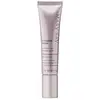What's inside
What's inside
 Key Ingredients
Key Ingredients

 Benefits
Benefits

 Concerns
Concerns

 Ingredients Side-by-side
Ingredients Side-by-side

Water
Skin ConditioningGlycerin
HumectantEthylhexyl Palmitate
EmollientPetrolatum
EmollientDimethicone
EmollientSea Silt
Skin ConditioningGlyceryl Stearate
EmollientPEG-100 Stearate
Cetearyl Alcohol
EmollientMilk Protein Extract
Hydrolyzed Collagen
EmollientTocopheryl Acetate
AntioxidantAvena Sativa Peptide
Skin ConditioningPolyacrylamide
C13-14 Isoparaffin
EmollientPhenoxyethanol
PreservativeHydroxyethylcellulose
Emulsion StabilisingCarbomer
Emulsion StabilisingArginine
MaskingLaureth-7
EmulsifyingGlycolic Acid
BufferingCaprylyl Glycol
EmollientRetinol
Skin Conditioning2-O-Ethyl Ascorbic Acid
Skin ConditioningSodium Hyaluronate
HumectantWater, Glycerin, Ethylhexyl Palmitate, Petrolatum, Dimethicone, Sea Silt, Glyceryl Stearate, PEG-100 Stearate, Cetearyl Alcohol, Milk Protein Extract, Hydrolyzed Collagen, Tocopheryl Acetate, Avena Sativa Peptide, Polyacrylamide, C13-14 Isoparaffin, Phenoxyethanol, Hydroxyethylcellulose, Carbomer, Arginine, Laureth-7, Glycolic Acid, Caprylyl Glycol, Retinol, 2-O-Ethyl Ascorbic Acid, Sodium Hyaluronate
Water
Skin ConditioningGlycerin
HumectantPetrolatum
EmollientParaffinum Liquidum
EmollientHydrogenated Polydecene
EmollientCetyl Esters
EmollientBis-Diglyceryl Polyacyladipate-2
EmollientButylene Glycol
HumectantHydrogenated Polyisobutene
EmollientSorbitan Olivate
EmulsifyingCetearyl Olivate
Hexyldecanol
EmollientCetyl Palmitate
EmollientTetrahexyldecyl Ascorbate
AntioxidantMagnolia Grandiflora Bark Extract
AntimicrobialCentella Asiatica Extract
CleansingBisabolol
MaskingHesperidin Methyl Chalcone
AntioxidantPisum Sativum Extract
Skin ConditioningCitrus Grandis Peel Extract
AstringentMagnolia Biondii Flower Extract
Skin ConditioningTetradecyl Aminobutyroylvalylaminobutyric Urea Trifluoroacetate
Skin ConditioningCentella Asiatica Meristem Cell Culture
AntioxidantDipeptide-2
Skin ConditioningPalmitoyl Tetrapeptide-7
Skin ConditioningTripeptide-1
Skin ConditioningBrassica Campestris Sterols
EmollientTocopheryl Acetate
AntioxidantSteareth-20
CleansingStearic Acid
CleansingPropylene Glycol
HumectantCetylhydroxyproline Palmitamide
Skin ConditioningSorbitan Palmitate
EmulsifyingAcrylates/C10-30 Alkyl Acrylate Crosspolymer
Emulsion StabilisingCetearyl Alcohol
EmollientCeteareth-20
CleansingTriethanolamine
BufferingDisodium EDTA
Silica
AbrasiveEthylene/Methacrylate Copolymer
Isopropyl Titanium Triisostearate
EmollientHydroxypropyl Cyclodextrin
MaskingSodium Citrate
BufferingPotassium Benzoate
PreservativeChlorhexidine Digluconate
AntimicrobialPhenoxyethanol
PreservativeDiazolidinyl Urea
PreservativeIodopropynyl Butylcarbamate
PreservativeMagnesium Chloride
Water, Glycerin, Petrolatum, Paraffinum Liquidum, Hydrogenated Polydecene, Cetyl Esters, Bis-Diglyceryl Polyacyladipate-2, Butylene Glycol, Hydrogenated Polyisobutene, Sorbitan Olivate, Cetearyl Olivate, Hexyldecanol, Cetyl Palmitate, Tetrahexyldecyl Ascorbate, Magnolia Grandiflora Bark Extract, Centella Asiatica Extract, Bisabolol, Hesperidin Methyl Chalcone, Pisum Sativum Extract, Citrus Grandis Peel Extract, Magnolia Biondii Flower Extract, Tetradecyl Aminobutyroylvalylaminobutyric Urea Trifluoroacetate, Centella Asiatica Meristem Cell Culture, Dipeptide-2, Palmitoyl Tetrapeptide-7, Tripeptide-1, Brassica Campestris Sterols, Tocopheryl Acetate, Steareth-20, Stearic Acid, Propylene Glycol, Cetylhydroxyproline Palmitamide, Sorbitan Palmitate, Acrylates/C10-30 Alkyl Acrylate Crosspolymer, Cetearyl Alcohol, Ceteareth-20, Triethanolamine, Disodium EDTA, Silica, Ethylene/Methacrylate Copolymer, Isopropyl Titanium Triisostearate, Hydroxypropyl Cyclodextrin, Sodium Citrate, Potassium Benzoate, Chlorhexidine Digluconate, Phenoxyethanol, Diazolidinyl Urea, Iodopropynyl Butylcarbamate, Magnesium Chloride
Ingredients Explained
These ingredients are found in both products.
Ingredients higher up in an ingredient list are typically present in a larger amount.
Cetearyl alcohol is a mixture of two fatty alcohols: cetyl alcohol and stearyl alcohol. It is mainly used as an emulsifier. Emulsifiers help prevent the separation of oils and products. Due to its composition, it can also be used to thicken a product or help create foam.
Cetearyl alcohol is an emollient. Emollients help soothe and hydrate the skin by trapping moisture.
Studies show Cetearyl alcohol is non-toxic and non-irritating. The FDA allows products labeled "alcohol-free" to have fatty alcohols.
This ingredient is usually derived from plant oils such as palm, vegetable, or coconut oils. There is debate on whether this ingredient will cause acne.
Due to the fatty acid base, this ingredient may not be Malassezia folliculitis safe.
Learn more about Cetearyl AlcoholGlycerin is already naturally found in your skin. It helps moisturize and protect your skin.
A study from 2016 found glycerin to be more effective as a humectant than AHAs and hyaluronic acid.
As a humectant, it helps the skin stay hydrated by pulling moisture to your skin. The low molecular weight of glycerin allows it to pull moisture into the deeper layers of your skin.
Hydrated skin improves your skin barrier; Your skin barrier helps protect against irritants and bacteria.
Glycerin has also been found to have antimicrobial and antiviral properties. Due to these properties, glycerin is often used in wound and burn treatments.
In cosmetics, glycerin is usually derived from plants such as soybean or palm. However, it can also be sourced from animals, such as tallow or animal fat.
This ingredient is organic, colorless, odorless, and non-toxic.
Glycerin is the name for this ingredient in American English. British English uses Glycerol/Glycerine.
Learn more about GlycerinPetrolatum is more commonly known as petroleum jelly. It is created by mixing waxes and mineral oils.
This ingredient is effective at reducing water loss by 99%. This is because it is an occlusive. Occlusives create a hydrophobic barrier on the skin to prevent evaporation. This property makes it great for hydrating dry skin.
Pro tip: Use occlusives, such as this ingredient, on damp skin for the best results.
The quality or origin of petrolatum is only known when disclosed by the brand. Most cosmetic petrolatum has gone through several purification stages.
Another benefit of occlusives is it protects your skin against infection or allergies.
Petrolatum may not be safe for fungal-acne. Studies show mineral oil / petroleum leads to the growth of M. Furfur, a type of yeast.
Learn more about PetrolatumPhenoxyethanol is a preservative that has germicide, antimicrobial, and aromatic properties. Studies show that phenoxyethanol can prevent microbial growth. By itself, it has a scent that is similar to that of a rose.
It's often used in formulations along with Caprylyl Glycol to preserve the shelf life of products.
Tocopheryl Acetate is AKA Vitamin E. It is an antioxidant and protects your skin from free radicals. Free radicals damage the skin by breaking down collagen.
One study found using Tocopheryl Acetate with Vitamin C decreased the number of sunburned cells.
Tocopheryl Acetate is commonly found in both skincare and dietary supplements.
Learn more about Tocopheryl AcetateWater. It's the most common cosmetic ingredient of all. You'll usually see it at the top of ingredient lists, meaning that it makes up the largest part of the product.
So why is it so popular? Water most often acts as a solvent - this means that it helps dissolve other ingredients into the formulation.
You'll also recognize water as that liquid we all need to stay alive. If you see this, drink a glass of water. Stay hydrated!
Learn more about Water